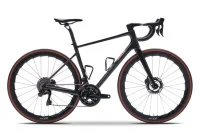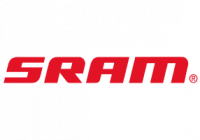$2K Aero Bikes – Which is Best?
A version![]() of this article was originally
of this article was originally
published in Triathlete Magazine
I am looking around at new triathlon bikes. I’ve read all the specs and reviews and have narrowed my search down to the Cérvelo P2K, Felt S25 and Quintana Roo Tequillo. I have test ridden the Felt and Quintana Roo and they both felt pretty good. They are all about the same price and I don’t know which I should get. Any insight would be greatly appreciated.
Peter Thompson, PA
Dear Peter,
The bikes you are considering have some subtle differences in regards to sizing and component specifications, but fall into the same general tubing, price and geometry category. For this reason, if they are set up the same, you are going to have a similar experience on each of these bikes in regards to performance and ride quality. So, based on this, how should you decide what bike to get?
Fit and Geometry – Do not worry about what professional athletes ride, what reviews say, frame materials, or what wheels or components a bike has until after you have completed a comprehensive fitting and know that model fits you well. The most important variable when purchasing a new triathlon or road bike is fit. For many people, the bike they buy determines their riding position. This is not how it should be and is akin to choosing your running shoes without considering whether it fits your foot and support needs well. Instead of letting the bike decide what position you should ride in, your optimal riding position should determine which bikes fit you well and which do not.
Every rider is unique and there is no standardized position that is optimal for everyone. For this reason, it is important that positioning and how it relates to products and frame geometry be considered on an individual basis. Professional bike fitters have computer software and other analysis tools available (like a size cycle) that can be used to precisely determine how well a bike/frame fits your riding position. An effective fitting session can save you significant time and money down the road by eliminating the guesswork. Expect to spend 2-4 hours with your fitter and to spend between $200 and $400 for a session. Some fitters and shops will credit part of your fitting towards a new bike purchase. In the case of the three bike models you are considering, it is likely that all three will fit you reasonably well or all three will not fit you very well as the frame designs and sizing between the three models is similar.
The Dealer – Because fitting and mechanical understanding of triathlon bikes is so important to the end result, the most important decision you have to make is often not which bike you buy, but instead where you buy it. It is often misconceived that bikes and bicycle parts are commodity products and that finding the least expensive price means getting the best “deal”. In reality, bikes are about as far from a commodity as possible as they are a sum of many inter-dependent parts that need to match the individual rider’s needs to work as designed. This means that everything from frame size, to details like crank, stem and aerobar size, to gearing and saddle choice matters and will influence the end result.
Stock bikes come from the factory equipped for the “average” person and who is truly “average”? This means that changes are almost always required when setting up a stock bicycle and a good shop will make individualized recommendations and will work with you to get your bike set-up to match your needs. Buying from a conscientious dealer that focuses on triathletes and triathlon cycling will help guarantee that your bike works to its capacity. One example as to why this can matter occurred a couple years ago when a common triathlon bike manufacturer equipped a popular model with tires and rim strips that were sub-par. This parts spec helped keep the bike below a certain price point, but it also made the bike prone to flat tires. Some conscientious dealers realized that these tires and rim strips were suspect and replaced them before the model even made it to the end consumer. At triathlons that season, there were a lot of people getting flats with the stock tires and rim strips on this model and a few who avoided the problem completely because their dealer kept it from being a problem. While a good dealer cannot foresee every issue, it is attention to details like this that will enhance your experience on the bike and makes some dealers better values than others, regardless of price.
Finding a Place to Buy – Even in many metropolitan areas, knowledgeable triathlon cycling fitters/dealers are not common. Interview prospects carefully and don’t be afraid to travel. Your bike is the most important piece of triathlon gear you will buy and your riding position has more impact on your comfort and efficiency than any other variable. Working with a qualified professional is a long-term investment that will pay off as long as you ride bikes or participate in triathlons.
Start by interviewing any prospective company and making sure that they are familiar with triathlon and work with triathletes daily. Is triathlon just a small part of their clientele or is it a major component of their business? Asking questions like the one you have asked here can be helpful and give you perspective as to how the dealer thinks. If they don’t know what two of the three models are, keep looking. If they just recommend stock bike models without fitting you first, keep looking. If their answer does not include a discussion and understanding of a comprehensive fitting, your individual needs, and how it relates to the models you are considering, keep looking.
The best dealers/fitters will ask you questions about your riding and participation in the sport and then make suggestions based upon your answers. They will listen to your wants, but base their questions and answers in your needs.
So, this all being said, which bike of the three should you go with? Assuming they all fit you well, go with the one carried by the most knowledgeable and supportive dealer. In the long run, this will affect your performance and satisfaction with the product much more than what brand name is on the side.
Good luck and ride hard!
Ian
Originally published September 2005/Copyright © 2005









